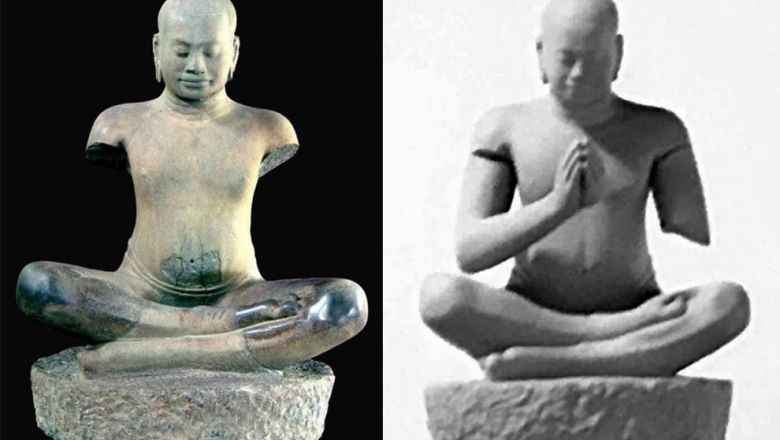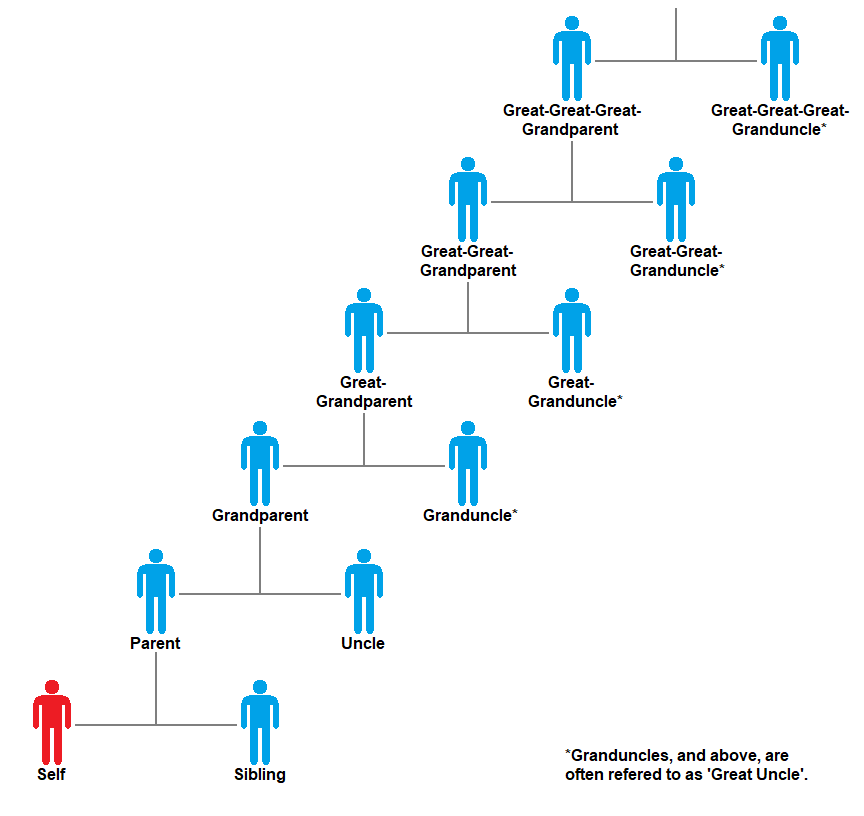|
Harshavarman I
Harshavarman I ( km, ហស៌វរ្ម័នទី១; or Rudraloka, died in 923) was an Angkorian king who reigned in 910–923 CE. He is mentioned by David P. Chandler, who is one of the foremost western scholars of Cambodia's modern history."Book Review: Voices from S-21" . ''The American Historical Review'' (October 2002). Family Harshavarman was a son of King and his Queen, who was a sister of . Grandparents of Harshavarman ...[...More Info...] [...Related Items...] OR: [Wikipedia] [Google] [Baidu] |
Monarchy Of Cambodia
The monarchy of Cambodia is the head of state of the Cambodia, Kingdom of Cambodia. In the contemporary period, the King's power has been limited to that of a symbolic figurehead. The monarchy had been in existence since at least 68 AD except during its abolition from 1970 to 1993. Since 1993, the King of Cambodia has been an elected monarch, making Cambodia one of the few elective monarchy, elective monarchies of the world. The king is elected for life by the Royal Council of the Throne, which consists of several senior political and religious figures. Candidates are chosen from among male descendants of King Ang Duong who are at least 30 years old, from the two royal houses of Cambodia (the House of Norodom and the House of Sisowath). Role Cambodia's constitution, promulgated in 1993 stipulated the king's role as a mainly ceremonial one. It declared that the king "shall reign, but not govern" as well as being the "symbol of national unity and continuity". The king perfo ... [...More Info...] [...Related Items...] OR: [Wikipedia] [Google] [Baidu] |
Jayavarman VII
Jayavarman VII, posthumous name of Mahaparamasaugata ( km, ជ័យវរ្ម័នទី៧, c. 1122–1218), was king of the Khmer Empire. He was the son of King Dharanindravarman II (r. 1150–1160) and Queen Sri Jayarajacudamani. He was the first king devoted to Buddhism, as only one prior Khmer king was a Buddhist. He then built the Bayon as a monument to Buddhism. Jayavarman VII is generally considered the most powerful of the Khmer monarchs by historians. His government built many projects including hospitals, highways, rest houses and temples. With Buddhism as his motivation, King Jayavarman VII is credited with introducing a welfare state that served the physical and spiritual needs of the Khmer people. Defeat of the Cham and coronation In 1177 and again in 1178, the Cham invaded the Khmer Empire. In 1177, Champa King Jaya Indravarman IV launched a surprise attack on the Khmer capital by sailing a fleet up the Mekong River, across Lake Tonlé Sap, and then up ... [...More Info...] [...Related Items...] OR: [Wikipedia] [Google] [Baidu] |
Cambodian Theravada Buddhists
Cambodian usually refers to: * Something of, from, or related to the country of Cambodia ** Cambodian people (or Khmer people) ** Cambodian language (or Khmer language) ** For citizens and nationals of Cambodia, see Demographics of Cambodia ** For languages spoken in Cambodia, see Languages of Cambodia Cambodian may also refer to: Other * Cambodian architecture * Cambodian cinema * Cambodian culture * Cambodian cuisine * Cambodian literature * Cambodian music * Cambodian name * Cambodian nationalism * Cambodian descendants worldwide: ** Cambodian Americans ** Cambodian Australians ** Cambodian Canadians ** Cambodians in France See also * *List of Cambodians {{Short description, none This is a list of notable Cambodian people, persons from Cambodia or of Khmer descent. * Adda Angel * Am Rong * Ampor Tevi * Arn Chorn-Pond * Beat Richner * Bérénice Marlohe * Bour Kry * Chan Nak * Chan Sy * Chantho ... {{disambig Language and nationality disambiguation pages ... [...More Info...] [...Related Items...] OR: [Wikipedia] [Google] [Baidu] |
Cambodian Buddhist Monarchs
Cambodian usually refers to: * Something of, from, or related to the country of Cambodia ** Cambodian people (or Khmer people) ** Cambodian language (or Khmer language) ** For citizens and nationals of Cambodia, see Demographics of Cambodia ** For languages spoken in Cambodia, see Languages of Cambodia Cambodian may also refer to: Other * Cambodian architecture * Cambodian cinema * Cambodian culture * Cambodian cuisine * Cambodian literature * Cambodian music * Cambodian name * Cambodian nationalism * Cambodian descendants worldwide: ** Cambodian Americans ** Cambodian Australians ** Cambodian Canadians ** Cambodians in France See also * *List of Cambodians {{Short description, none This is a list of notable Cambodian people, persons from Cambodia or of Khmer descent. * Adda Angel * Am Rong * Ampor Tevi * Arn Chorn-Pond * Beat Richner * Bérénice Marlohe * Bour Kry * Chan Nak * Chan Sy * Chantho ... {{disambig Language and nationality disambiguation pages [...More Info...] [...Related Items...] OR: [Wikipedia] [Google] [Baidu] |
10th-century Cambodian Monarchs
1 (one, unit, unity) is a number representing a single or the only entity. 1 is also a numerical digit and represents a single unit of counting or measurement. For example, a line segment of ''unit length'' is a line segment of length 1. In conventions of sign where zero is considered neither positive nor negative, 1 is the first and smallest positive integer. It is also sometimes considered the first of the infinite sequence of natural numbers, followed by 2, although by other definitions 1 is the second natural number, following 0. The fundamental mathematical property of 1 is to be a multiplicative identity, meaning that any number multiplied by 1 equals the same number. Most if not all properties of 1 can be deduced from this. In advanced mathematics, a multiplicative identity is often denoted 1, even if it is not a number. 1 is by convention not considered a prime number; this was not universally accepted until the mid-20th century. Additionally, 1 is ... [...More Info...] [...Related Items...] OR: [Wikipedia] [Google] [Baidu] |
List Of Kings Of Cambodia
The monarchy of Cambodia is the head of state of the Cambodia, Kingdom of Cambodia. In the contemporary period, the King's power has been limited to that of a symbolic figurehead. The monarchy had been in existence since at least 68 AD except during its abolition from 1970 to 1993. Since 1993, the King of Cambodia has been an elected monarch, making Cambodia one of the few elective monarchy, elective monarchies of the world. The king is elected for life by the Royal Council of the Throne, which consists of several senior political and religious figures. Candidates are chosen from among male descendants of King Ang Duong who are at least 30 years old, from the two royal houses of Cambodia (the House of Norodom and the House of Sisowath). Role Cambodia's constitution, promulgated in 1993 stipulated the king's role as a mainly ceremonial one. It declared that the king "shall reign, but not govern" as well as being the "symbol of national unity and continuity". The king perfo ... [...More Info...] [...Related Items...] OR: [Wikipedia] [Google] [Baidu] |
Phnom Bakheng
Phnom Bakheng ( km, ភ្នំបាខែង ) is a Hindu and Buddhist temple in the form of a temple mountain in Siem Reap Province, Cambodia. Dedicated to Shiva, it was built at the end of the 9th century, during the reign of King Yasovarman (889-910). Located atop a hill, it is nowadays a popular tourist spot for sunset views of the much bigger temple Angkor Wat, which lies amid the jungle about 1.5 km to the southeast. The large number of visitors makes Phnom Bakheng one of the most threatened monuments of Angkor. Since 2004, World Monuments Fund has been working to conserve the temple in partnership with APSARA. History Constructed more than two centuries before Angkor Wat, Phnom Bakheng was in its day the principal temple of the Angkor region, historians believe. It was the architectural centerpiece of a new capital, Yasodharapura, that Yasovarman built when he moved the court from the capital Hariharalaya in the Roluos area located to the southeast. An inscript ... [...More Info...] [...Related Items...] OR: [Wikipedia] [Google] [Baidu] |
Baksei Chamkrong
Baksei Chamkrong (also spelled Baksey Chamkrong, km, បក្សីចាំក្រុង) is a legendary monarch of Cambodia, whose life and rule are known from the ''Cambodian Royal Chronicles''. Despite a lack of historicity, the narrative of his epic has had a lasting influence on Cambodian culture and politics. Etymology According to linguist Saveros Pou, the old Khmer meaning of the root ''krong'' is kept in the name of Baksei Cham Krong, meaning the King watched over by a bird, while in modern Khmer, ''krong'' means city, town, or country. Legend The legend of Baksey Chamkrong, which originated in Wat Vihear Suor, is told in the Cambodian Royal Chronicles, and it is presented here in the version published by Mak Phoeun in 1984. The legend was enriched in 1998 by further study of the Chronicles and connection with Khmer folklore by Ros Chantrabot in his book on Khmer history. Auspicious sign of a being-of-merit In 1552 of the Buddhist era, 1008 of the Christ ... [...More Info...] [...Related Items...] OR: [Wikipedia] [Google] [Baidu] |
Temple
A temple (from the Latin ) is a building reserved for spiritual rituals and activities such as prayer and sacrifice. Religions which erect temples include Christianity (whose temples are typically called churches), Hinduism (whose temples are called Mandir), Buddhism, Sikhism (whose temples are called gurudwara), Jainism (whose temples are sometimes called derasar), Islam (whose temples are called mosques), Judaism (whose temples are called synagogues), Zoroastrianism (whose temples are sometimes called Agiary), the Baha'i Faith (which are often simply referred to as Baha'i House of Worship), Taoism (which are sometimes called Daoguan), Shinto (which are sometimes called Jinja), Confucianism (which are sometimes called the Temple of Confucius), and ancient religions such as the Ancient Egyptian religion and the Ancient Greek religion. The form and function of temples are thus very variable, though they are often considered by believers to be, in some sense, the "house" of ... [...More Info...] [...Related Items...] OR: [Wikipedia] [Google] [Baidu] |
Reign
A reign is the period of a person's or dynasty's occupation of the office of monarch of a nation (e.g., Saudi Arabia, Belgium, Andorra), of a people (e.g., the Franks, the Zulus) or of a spiritual community (e.g., Catholicism, Tibetan Buddhism, Nizari Ismailism). In most hereditary monarchies and some elective monarchies (e.g., Holy Roman Empire) there have been no limits on the duration of a sovereign's reign or incumbency, nor is there a term of office. Thus, a reign usually lasts until the monarch dies, unless the monarchy itself is abolished or the monarch abdicates or is deposed. In elective monarchies, there may be a fixed period of time for the duration of the monarch's tenure in office (e.g., Malaysia). The term of a reign can be indicated with the abbreviation "r." (for Latin ') after a sovereign's name, such as the following: : George VI, King of Great Britain, Ireland and the British Dominions, Emperor of India (r. 1936–1952) Regnal periods Notable reigns have i ... [...More Info...] [...Related Items...] OR: [Wikipedia] [Google] [Baidu] |
Uncle
An uncle is usually defined as a male relative who is a sibling of a parent or married to a sibling of a parent. Uncles who are related by birth are second-degree relatives. The female counterpart of an uncle is an aunt, and the reciprocal relationship is that of a nephew or niece. The word comes from la, avunculus, the diminutive of ''avus'' (grandfather), and is a family relationship within an extended or immediate family. In some cultures and families, children may refer to the cousins of their parents as uncle (or aunt). It is also used as a title of respect for older relatives, neighbours, acquaintances, family friends, and even total strangers in some cultures, for example Aboriginal Australian elders. Using the term in this way is a form of fictive kinship. Any social institution where a special relationship exists between a man and his sisters' children is known as an avunculate (or avunculism or avuncularism). This relationship can be formal or informal, dependi ... [...More Info...] [...Related Items...] OR: [Wikipedia] [Google] [Baidu] |
.jpg)



